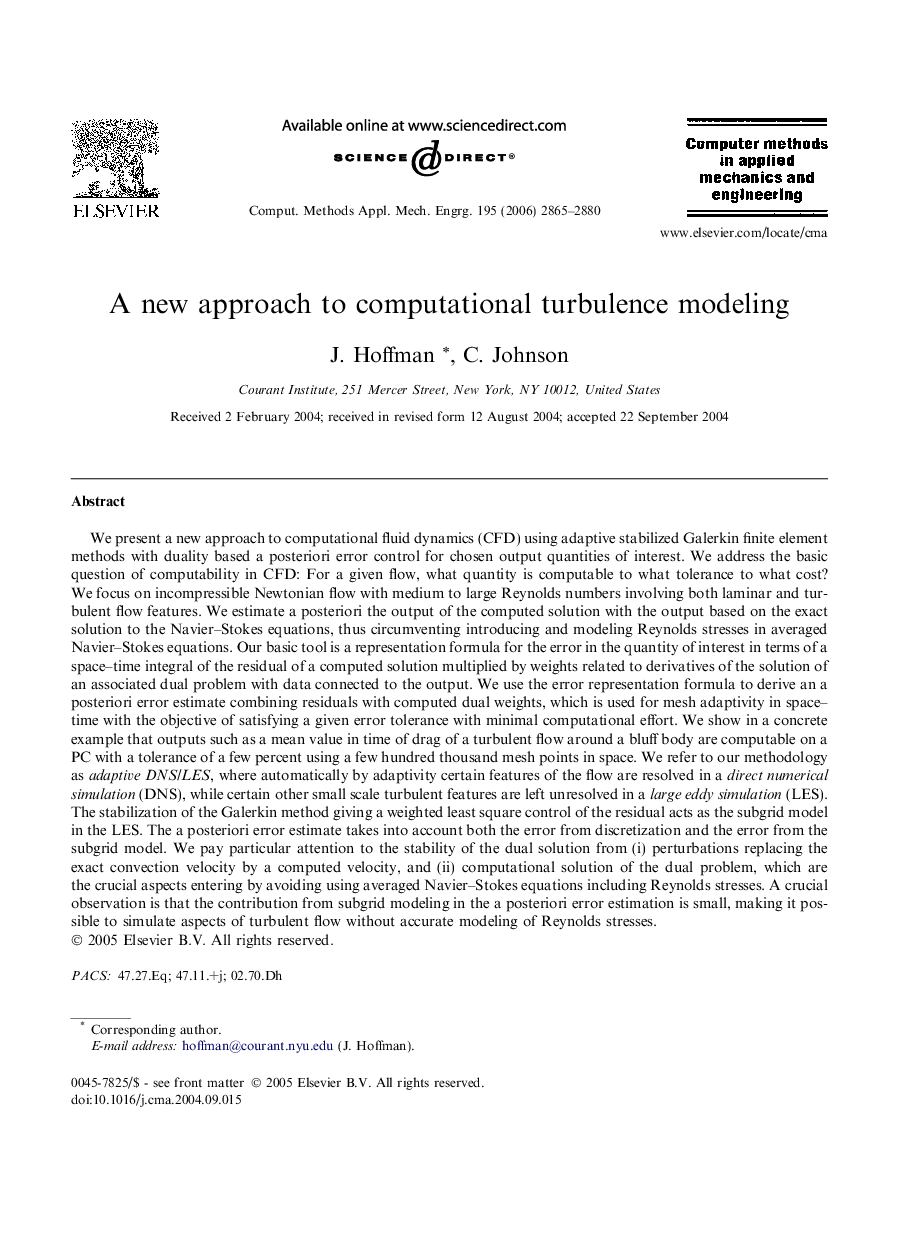| کد مقاله | کد نشریه | سال انتشار | مقاله انگلیسی | نسخه تمام متن |
|---|---|---|---|---|
| 500102 | 863072 | 2006 | 16 صفحه PDF | دانلود رایگان |

We present a new approach to computational fluid dynamics (CFD) using adaptive stabilized Galerkin finite element methods with duality based a posteriori error control for chosen output quantities of interest. We address the basic question of computability in CFD: For a given flow, what quantity is computable to what tolerance to what cost? We focus on incompressible Newtonian flow with medium to large Reynolds numbers involving both laminar and turbulent flow features. We estimate a posteriori the output of the computed solution with the output based on the exact solution to the Navier–Stokes equations, thus circumventing introducing and modeling Reynolds stresses in averaged Navier–Stokes equations. Our basic tool is a representation formula for the error in the quantity of interest in terms of a space–time integral of the residual of a computed solution multiplied by weights related to derivatives of the solution of an associated dual problem with data connected to the output. We use the error representation formula to derive an a posteriori error estimate combining residuals with computed dual weights, which is used for mesh adaptivity in space–time with the objective of satisfying a given error tolerance with minimal computational effort. We show in a concrete example that outputs such as a mean value in time of drag of a turbulent flow around a bluff body are computable on a PC with a tolerance of a few percent using a few hundred thousand mesh points in space. We refer to our methodology as adaptive DNS/LES, where automatically by adaptivity certain features of the flow are resolved in a direct numerical simulation (DNS), while certain other small scale turbulent features are left unresolved in a large eddy simulation (LES). The stabilization of the Galerkin method giving a weighted least square control of the residual acts as the subgrid model in the LES. The a posteriori error estimate takes into account both the error from discretization and the error from the subgrid model. We pay particular attention to the stability of the dual solution from (i) perturbations replacing the exact convection velocity by a computed velocity, and (ii) computational solution of the dual problem, which are the crucial aspects entering by avoiding using averaged Navier–Stokes equations including Reynolds stresses. A crucial observation is that the contribution from subgrid modeling in the a posteriori error estimation is small, making it possible to simulate aspects of turbulent flow without accurate modeling of Reynolds stresses.
Journal: Computer Methods in Applied Mechanics and Engineering - Volume 195, Issues 23–24, 15 April 2006, Pages 2865–2880